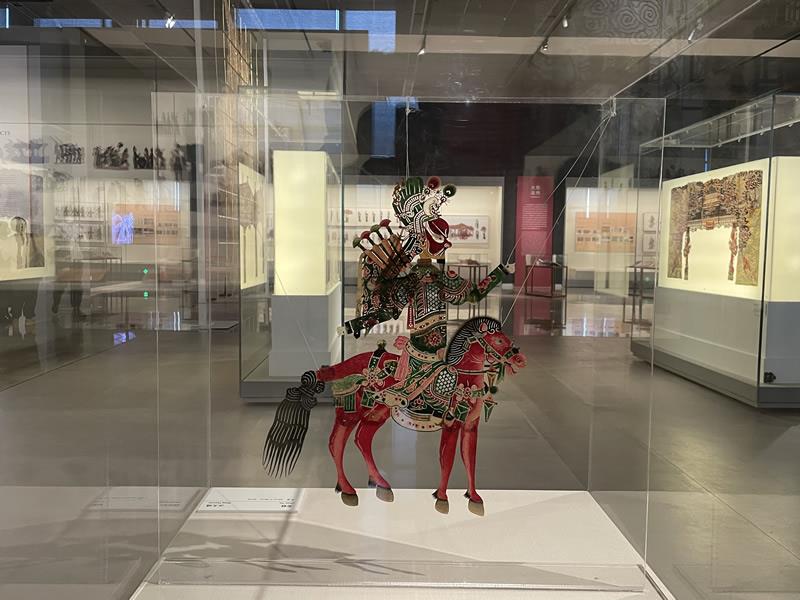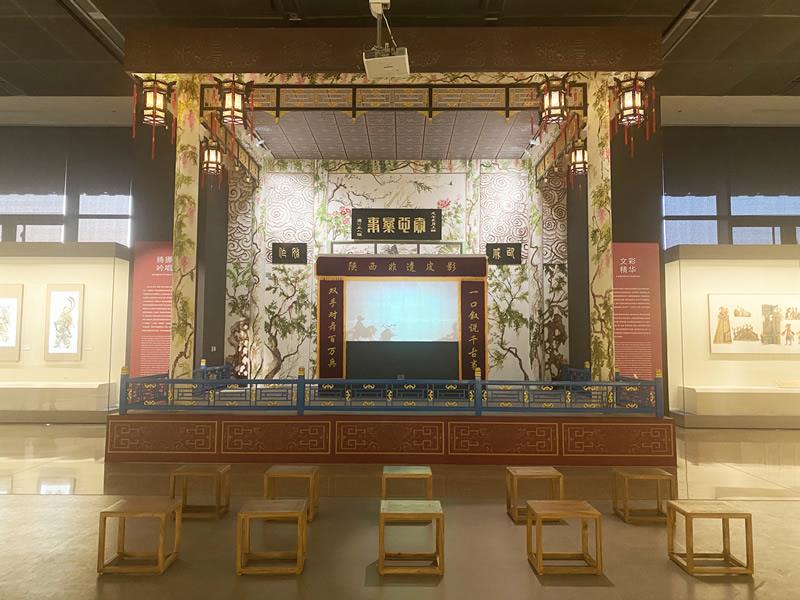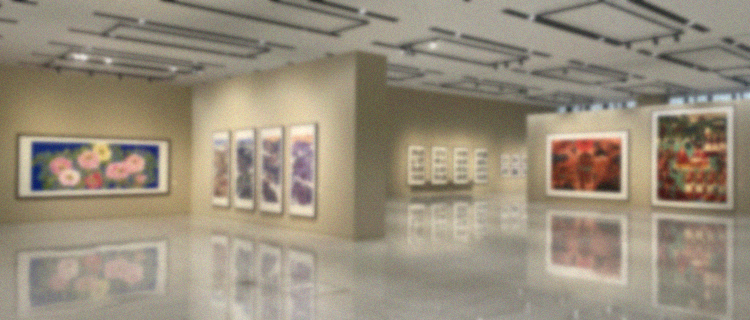Living Figures: Shaanxi Shadow Puppetry
2023-01-01
Living Figures: Shaanxi Shadow Puppetry is another new presentation in the "Treasures of China" series of the China National Arts and Crafts Museum and the China Intangible Cultural Heritage Museum.
During the preparation of the exhibition, the Chinese Traditional Culture Museum (CTCM) received support and donations of exhibits from Wang Tianwen, a national representative inheritor of ICH and a leading figure in Shaanxi shadow puppetry, and Wang Haiyan, a provincial representative inheritor of ICH in Shaanxi.
CTCM also received support from Xue Hongquan, a provincial representative inheritor of ICH in Shaanxi; Wu Jian'an, a renowned contemporary artist, professor at the Central Academy of Fine Arts, and doctoral supervisor; and Wang Lianping, a young artist.
Additionally, CTCM received research support from Zheng Jing and her team at the Academy of Arts & Design, Tsinghua University, as well as contributions from various individuals inside and outside the museum. CTCM express sincere gratitude to all.
Shaanxi is one of the birthplaces of Chinese shadow puppetry. The province’s shadow puppetry is divided into two major artistic schools: the eastern and western routes. It is prevalent in northern, southern and central Shaanxi, with varying puppet sizes and singing styles, retaining traces of traditional storytelling. It is the precursor of various local operas in modern Shaanxi.
Shaanxi's Huaxian county shadow puppetry, Huayin ancient tune, Agong tune and Xianban tune have been included in the national Intangible Cultural Heritage (ICH) list. However, with the advent of the new media era, Shaanxi shadow puppetry inevitably faces many challenges related to its survival and inheritance. Therefore, recognizing, discovering, inheriting and promoting the value of China's outstanding traditional culture, vitalizing its new vitality and creativity and building a sustainable cultural ecosystem for the future is an urgent mission.
The carving of shadow puppets is exquisitely delicate, with a clever combination of hollow and solid designs, producing beautiful, vivid and dynamic figures with a balance of complexity and simplicity, as well as a blend of reality and illusion.
The singing styles are diverse, including the delicate and melodious Wanwan tune, the clear and elegant Agong tune, the crisp and lively Xianban tune, and the bold and high-pitched old tune. These are complemented by the masterful manipulation skills of the puppeteers, creating intricate emotional expressions in literary plays and stirring battle scenes in martial plays, deeply loved by local audiences and having a wide and profound influence.
Since China joined the Convention for the Safeguarding of the Intangible Cultural Heritage in 2004, the country has invested significant resources in the protection of ICH.

Shadow puppetry, also known as shadow play, is a continuation of Chinese opera that evolves from the sacrificial songs and dances of primitive society, the popular entertainment of China's Warring States Period (475-221 BC) and the diverse performances of the Han Dynasty (206 BC-AD 220).
An ancient Chinese poem describes shadow puppetry like this: “With a single mouth, recounting ancient tales; and with both hands, orchestrating a dance of a million soldiers."
Shadow puppetry, which was passed down and transformed over millennia, remains vibrant in Chinese folk culture today, representing a significant part of China's outstanding traditional culture. Chinese shadow puppetry integrates visual arts, literary scripts, musical singing and performance techniques into a comprehensive art form.
Through long-term development, it has formed a relatively complete artistic system, with distinctive national characteristics and high aesthetic achievements. Shadow puppetry is closely related to people's production, life, seasonal festivals and customs, reflecting the unique aesthetic concepts, thoughts, emotions and spiritual pursuits of Chinese people through artistic expressions of folk culture and entertainment.
Chinese shadow puppetry is widespread, found in almost every province and region across the country. Examples include Luanzhou shadow puppetry, Zhuozhou shadow puppetry and Handan shadow puppetry in Hebei; western Henan shadow puppetry, Luoshan shadow puppetry and Tongbai shadow puppetry in Henan; Haining shadow puppetry in Zhejiang; Xiaoyi leather shadow puppetry and Jinnan shadow puppetry in Shanxi; Tengchong shadow puppetry in Yunnan; Mianyang shadow puppetry, Yunmeng shadow puppetry and Huanggang shadow puppetry in Hubei; and Huo Deng, Baizhu paper shadow puppetry and Yangchuang paper shadow puppetry in Guangdong.These various forms exhibit diverse styles in design, singing and performance, presenting a colorful array of artistic characteristics.
It is widely recognized that shadow puppetry originated in China, with Chinese shadow puppetry being the earliest, finest and most diverse. On Nov 27, 2011, UNESCO announced the inclusion of Chinese shadow puppetry in the Representative List of the Intangible Cultural Heritage of Humanity.
May the legacy of Chinese shadow puppetry continue to flourish and bloom.

 Whats On
Whats On  Whats On
Whats On 

